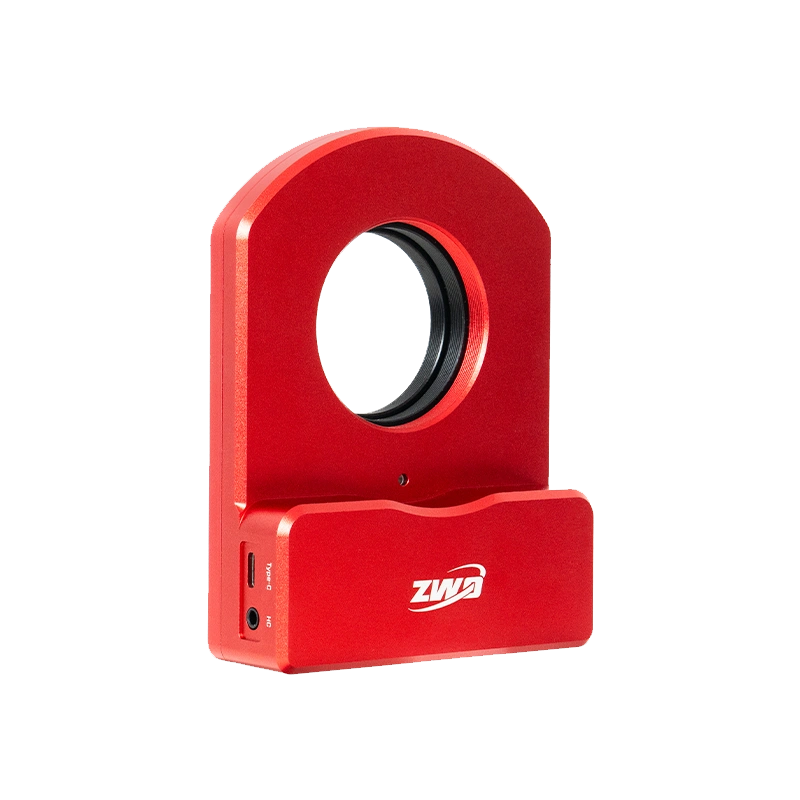Last Updated on May 13, 2025 by Practical Astrophotography Staff
Comet C/2025 F2 (SWAN) is a newly discovered comet that has been generating excitement among astronomers and skywatchers. It was first spotted on March 23, 2025, in images from the SWAN instrument aboard the SOHO spacecraft, which studies the Sun. This comet is likely a “dynamically old” object, meaning it has passed near the Sun multiple times before, though its small nucleus—estimated to be less than 2.5 km in diameter—makes its behavior somewhat unpredictable. When discovered, it was already relatively bright at magnitude 10, and it has been steadily brightening as it approaches its closest point to the Sun, or perihelion, on May 1, 2025.

Current Status and Visibility
As of today, April 9, 2025, C/2025 F2 (SWAN) is visible in the Northern Hemisphere, including North America, but it requires optical aid to spot. Its brightness is currently around magnitude 7.5 to 8, which is too faint for the naked eye but easily observable with binoculars or a small telescope. The comet is located in the morning sky, low in the east-northeastern sky just before sunrise. It’s currently moving through the constellation Pegasus, near the Great Square, and is approaching the star Alpheratz (Alpha Andromedae) in the constellation Andromeda, which it will pass closely around April 13, 2025.
How to See It in North America
To catch a glimpse of C/2025 F2 (SWAN) from North America right now:
- Timing: Look about 45 minutes to an hour before sunrise, when the sky is still dark but the comet is above the horizon. This timing varies slightly depending on your location—e.g., around 5:30–6:00 AM EDT on the East Coast or 4:30–5:00 AM PDT on the West Coast.
- Direction: Face east-northeast and scan low above the horizon.
- Finding It: Use the Great Square of Pegasus as a guide. The comet is near the bright star Alpheratz, the northeastern corner of the square. Point your binoculars toward this star and slowly sweep the area to locate a small, fuzzy greenish object—this is the comet’s coma, caused by sunlight illuminating diatomic carbon molecules.
- Equipment: Binoculars (e.g., 7×50 or 10×50) or a small telescope will reveal the comet clearly. Long-exposure photography can also capture its faint tail, which currently spans more than two moon diameters.
- Conditions: Choose a spot with a clear view of the eastern horizon, away from city lights and morning haze, to maximize visibility.
Future Visibility
The comet is expected to brighten significantly as it nears perihelion on May 1, 2025, when it will pass just 0.33 AU (about 31 million miles) from the Sun—inside Mercury’s orbit. Predictions suggest it could reach a peak brightness of magnitude 5 or even slightly brighter (possibly as bright as magnitude 3.6, though estimates are uncertain). At magnitude 5, it would be visible to the naked eye under dark skies, though it will still be easiest to spot with binoculars due to its low position and proximity to twilight.
- Late April to Early May: By the end of April, the comet will shift from the morning sky to the evening sky in North America, appearing low in the northwest after sunset. Its brightness should peak around May 1, making this the best time to try seeing it without equipment, though it will remain challenging due to its low altitude and the encroaching twilight.
- Post-Perihelion: After May 1, the comet will move into the Southern Hemisphere’s sky and will no longer be visible from North America as it fades and travels southward.
Tips and Considerations
- Weather and Timing: Check local weather forecasts and sunrise times for your exact location. The window of visibility is narrow due to the comet’s proximity to the horizon and the brightening sky.
- Apps: Tools like the Sky Tonight app can help pinpoint the comet’s exact location based on your coordinates and time. Search for “C/2025 F2 (SWAN)” and follow the on-screen guide.
- Uncertainty: Comets are notoriously unpredictable. C/2025 F2 (SWAN) could brighten more than expected, experience an outburst, or even disintegrate as it nears the Sun. Its small size increases the chance of surprises, so stay updated via astronomy websites or local stargazing groups.
For now, North American observers have a great opportunity to see this comet in the pre-dawn sky over the next few weeks. Grab your binoculars, find a dark spot, and enjoy this celestial visitor before it heads south!







